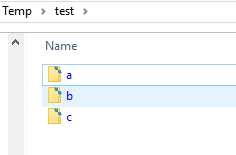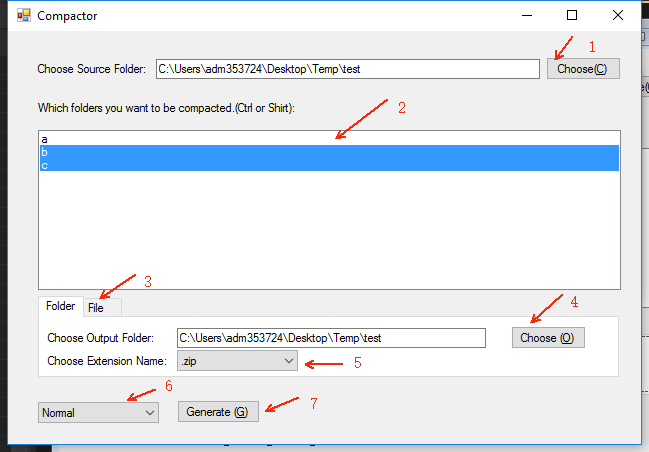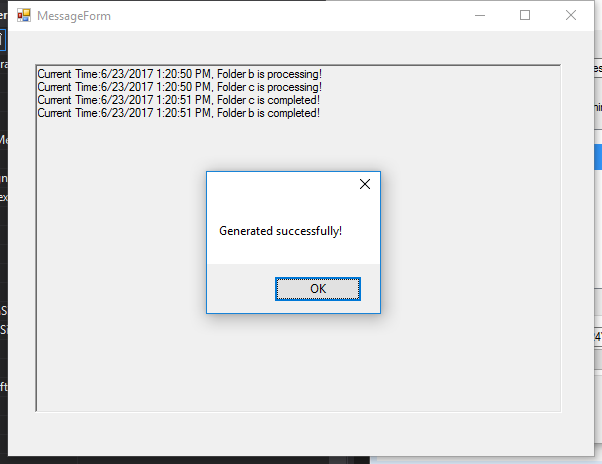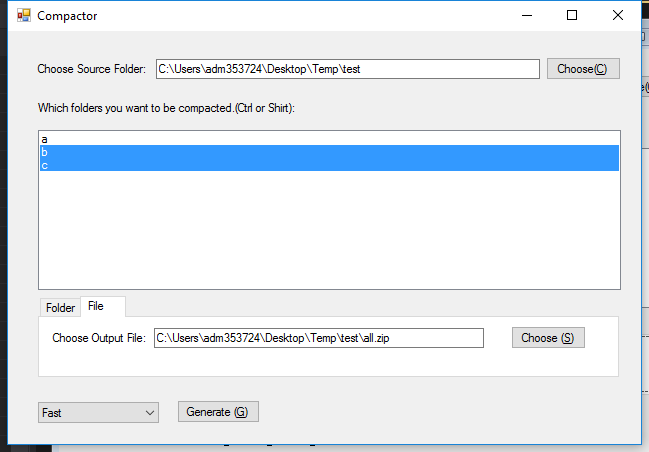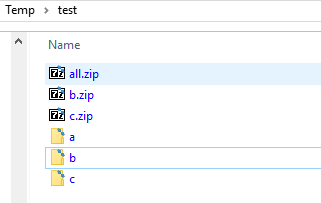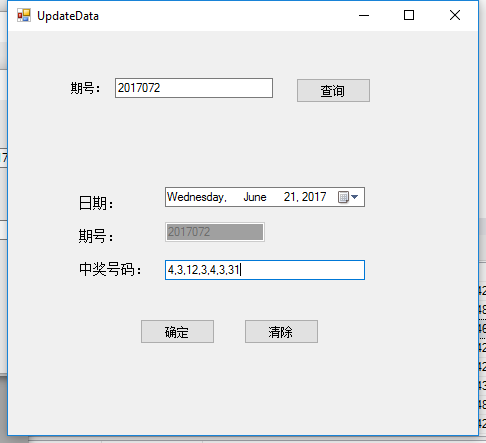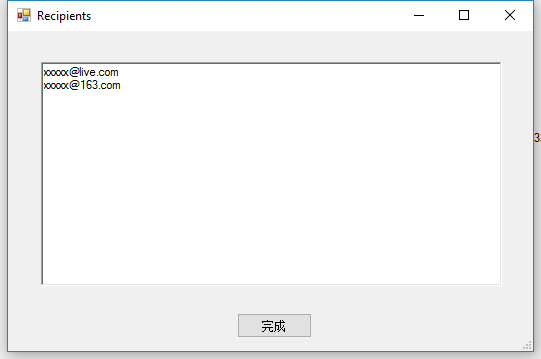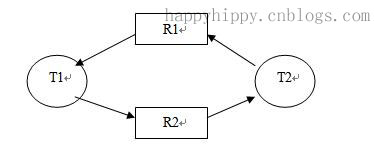Ø 基本常用查询
--select
select * from student;
--all 查询所有
select all sex from student;
--distinct 过滤重复
select distinct sex from student;
--count 统计
select count(*) from student;
select count(sex) from student;
select count(distinct sex) from student;
--top 取前N条记录
select top 3 * from student;
--alias column name 列重命名
select id as 编号, name '名称', sex 性别 from student;
--alias table name 表重命名
select id, name, s.id, s.name from student s;
--column 列运算
select (age + id) col from student;
select s.name + '-' + c.name from classes c, student s where s.cid = c.id;
--where 条件
select * from student where id = 2;
select * from student where id > 7;
select * from student where id < 3;
select * from student where id <> 3;
select * from student where id >= 3;
select * from student where id <= 5;
select * from student where id !> 3;
select * from student where id !< 5;
--and 并且
select * from student where id > 2 and sex = 1;
--or 或者
select * from student where id = 2 or sex = 1;
--between ... and ... 相当于并且
select * from student where id between 2 and 5;
select * from student where id not between 2 and 5;
--like 模糊查询
select * from student where name like '%a%';
select * from student where name like '%[a][o]%';
select * from student where name not like '%a%';
select * from student where name like 'ja%';
select * from student where name not like '%[j,n]%';
select * from student where name like '%[j,n,a]%';
select * from student where name like '%[^ja,as,on]%';
select * from student where name like '%[ja_on]%';
--in 子查询
select * from student where id in (1, 2);
--not in 不在其中
select * from student where id not in (1, 2);
--is null 是空
select * from student where age is null;
--is not null 不为空
select * from student where age is not null;
--order by 排序
select * from student order by name;
select * from student order by name desc;
select * from student order by name asc;
--group by 分组
按照年龄进行分组统计
select count(age), age from student group by age;
按照性别进行分组统计
select count(*), sex from student group by sex;
按照年龄和性别组合分组统计,并排序
select count(*), sex from student group by sex, age order by age;
按照性别分组,并且是id大于2的记录最后按照性别排序
select count(*), sex from student where id > 2 group by sex order by sex;
查询id大于2的数据,并完成运算后的结果进行分组和排序
select count(*), (sex * id) new from student where id > 2 group by sex * id order by sex * id;
--group by all 所有分组
按照年龄分组,是所有的年龄
select count(*), age from student group by all age;
--having 分组过滤条件
按照年龄分组,过滤年龄为空的数据,并且统计分组的条数和现实年龄信息
select count(*), age from student group by age having age is not null;
按照年龄和cid组合分组,过滤条件是cid大于1的记录
select count(*), cid, sex from student group by cid, sex having cid > 1;
按照年龄分组,过滤条件是分组后的记录条数大于等于2
select count(*), age from student group by age having count(age) >= 2;
按照cid和性别组合分组,过滤条件是cid大于1,cid的最大值大于2
select count(*), cid, sex from student group by cid, sex having cid > 1 and max(cid) > 2;
Ø 嵌套子查询
子查询是一个嵌套在select、insert、update或delete语句或其他子查询中的查询。任何允许使用表达式的地方都可以使用子查询。子查询也称为内部查询或内部选择,而包含子查询的语句也成为外部查询或外部选择。
# from (select … table)示例
将一个table的查询结果当做一个新表进行查询
select * from (
select id, name from student where sex = 1
) t where t.id > 2;
上面括号中的语句,就是子查询语句(内部查询)。在外面的是外部查询,其中外部查询可以包含以下语句:
1、 包含常规选择列表组件的常规select查询
2、 包含一个或多个表或视图名称的常规from语句
3、 可选的where子句
4、 可选的group by子句
5、 可选的having子句
# 示例
查询班级信息,统计班级学生人生
select *, (select count(*) from student where cid = classes.id) as num
from classes order by num;
# in, not in子句查询示例
查询班级id大于小于的这些班级的学生信息
select * from student where cid in (
select id from classes where id > 2 and id < 4
);
查询不是班的学生信息
select * from student where cid not in (
select id from classes where name = '2班'
)
in、not in 后面的子句返回的结果必须是一列,这一列的结果将会作为查询条件对应前面的条件。如cid对应子句的id;
# exists和not exists子句查询示例
查询存在班级id为的学生信息
select * from student where exists (
select * from classes where id = student.cid and id = 3
);
查询没有分配班级的学生信息
select * from student where not exists (
select * from classes where id = student.cid
);
exists和not exists查询需要内部查询和外部查询进行一个关联的条件,如果没有这个条件将是查询到的所有信息。如:id等于student.id;
# some、any、all子句查询示例
查询班级的学生年龄大于班级的学生的年龄的信息
select * from student where cid = 5 and age > all (
select age from student where cid = 3
);
select * from student where cid = 5 and age > any (
select age from student where cid = 3
);
select * from student where cid = 5 and age > some (
select age from student where cid = 3
);
Ø 聚合查询
1、 distinct去掉重复数据
select distinct sex from student;
select count(sex), count(distinct sex) from student;
2、 compute和compute by汇总查询
对年龄大于的进行汇总
select age from student
where age > 20 order by age compute sum(age) by age;
对年龄大于的按照性别进行分组汇总年龄信息
select id, sex, age from student
where age > 20 order by sex, age compute sum(age) by sex;
按照年龄分组汇总
select age from student
where age > 20 order by age, id compute sum(age);
按照年龄分组,年龄汇总,id找最大值
select id, age from student
where age > 20 order by age compute sum(age), max(id);
compute进行汇总前面是查询的结果,后面一条结果集就是汇总的信息。compute子句中可以添加多个汇总表达式,可以添加的信息如下:
a、 可选by关键字。它是每一列计算指定的行聚合
b、 行聚合函数名称。包括sum、avg、min、max、count等
c、 要对其执行聚合函数的列
compute by适合做先分组后汇总的业务。compute by后面的列一定要是order by中出现的列。
3、 cube汇总
cube汇总和compute效果类似,但语法较简洁,而且返回的是一个结果集。
select count(*), sex from student group by sex with cube;
select count(*), age, sum(age) from student where age is not null group by age with cube;
cube要结合group by语句完成分组汇总
Ø 排序函数
排序在很多地方需要用到,需要对查询结果进行排序并且给出序号。比如:
1、 对某张表进行排序,序号需要递增不重复的
2、 对学生的成绩进行排序,得出名次,名次可以并列,但名次的序号是连续递增的
3、 在某些排序的情况下,需要跳空序号,虽然是并列
基本语法
排序函数 over([分组语句] 排序子句[desc][asc])
排序子句 order by 列名, 列名
分组子句 partition by 分组列, 分组列
# row_number函数
根据排序子句给出递增连续序号
按照名称排序的顺序递增
select s.id, s.name, cid, c.name, row_number() over(order by c.name) as number
from student s, classes c where cid = c.id;
# rank函数函数
根据排序子句给出递增的序号,但是存在并列并且跳空
顺序递增
select id, name, rank() over(order by cid) as rank from student;
跳过相同递增
select s.id, s.name, cid, c.name, rank() over(order by c.name) as rank
from student s, classes c where cid = c.id;
# dense_rank函数
根据排序子句给出递增的序号,但是存在并列不跳空
不跳过,直接递增
select s.id, s.name, cid, c.name, dense_rank() over(order by c.name) as dense
from student s, classes c where cid = c.id;
# partition by分组子句
可以完成对分组的数据进行增加排序,partition by可以与以上三个函数联合使用。
利用partition by按照班级名称分组,学生id排序
select s.id, s.name, cid, c.name, row_number() over(partition by c.name order by s.id) as rank
from student s, classes c where cid = c.id;
select s.id, s.name, cid, c.name, rank() over(partition by c.name order by s.id) as rank
from student s, classes c where cid = c.id;
select s.id, s.name, cid, c.name, dense_rank() over(partition by c.name order by s.id) as rank
from student s, classes c where cid = c.id;
# ntile平均排序函数
将要排序的数据进行平分,然后按照等分排序。ntile中的参数代表分成多少等分。
select s.id, s.name, cid, c.name,
ntile(5) over(order by c.name) as ntile
from student s, classes c where cid = c.id;
Ø 集合运算
操作两组查询结果,进行交集、并集、减集运算
1、 union和union all进行并集运算
--union 并集、不重复
select id, name from student where name like 'ja%'
union
select id, name from student where id = 4;
--并集、重复
select * from student where name like 'ja%'
union all
select * from student;
2、 intersect进行交集运算
--交集(相同部分)
select * from student where name like 'ja%'
intersect
select * from student;
3、 except进行减集运算
--减集(除相同部分)
select * from student where name like 'ja%'
except
select * from student where name like 'jas%';
Ø 公式表表达式
查询表的时候,有时候中间表需要重复使用,这些子查询被重复查询调用,不但效率低,而且可读性低,不利于理解。那么公式表表达式可以解决这个问题。
我们可以将公式表表达式(CET)视为临时结果集,在select、insert、update、delete或是create view语句的执行范围内进行定义。
--表达式
with statNum(id, num) as
(
select cid, count(*)
from student
where id > 0
group by cid
)
select id, num from statNum order by id;
with statNum(id, num) as
(
select cid, count(*)
from student
where id > 0
group by cid
)
select max(id), avg(num) from statNum;
Ø 连接查询
1、 简化连接查询
--简化联接查询
select s.id, s.name, c.id, c.name from student s, classes c where s.cid = c.id;
2、 left join左连接
--左连接
select s.id, s.name, c.id, c.name from student s left join classes c on s.cid = c.id;
3、 right join右连接
--右连接
select s.id, s.name, c.id, c.name from student s right join classes c on s.cid = c.id;
4、 inner join内连接
--内连接
select s.id, s.name, c.id, c.name from student s inner join classes c on s.cid = c.id;
--inner可以省略
select s.id, s.name, c.id, c.name from student s join classes c on s.cid = c.id;
5、 cross join交叉连接
--交叉联接查询,结果是一个笛卡儿乘积
select s.id, s.name, c.id, c.name from student s cross join classes c
--where s.cid = c.id;
6、 自连接(同一张表进行连接查询)
--自连接
select distinct s.* from student s, student s1 where s.id <> s1.id and s.sex = s1.sex;
Ø 函数
1、 聚合函数
max最大值、min最小值、count统计、avg平均值、sum求和、var求方差
select
max(age) max_age,
min(age) min_age,
count(age) count_age,
avg(age) avg_age,
sum(age) sum_age,
var(age) var_age
from student;
2、 日期时间函数
select dateAdd(day, 3, getDate());--加天
select dateAdd(year, 3, getDate());--加年
select dateAdd(hour, 3, getDate());--加小时
--返回跨两个指定日期的日期边界数和时间边界数
select dateDiff(day, '2011-06-20', getDate());
--相差秒数
select dateDiff(second, '2011-06-22 11:00:00', getDate());
--相差小时数
select dateDiff(hour, '2011-06-22 10:00:00', getDate());
select dateName(month, getDate());--当前月份
select dateName(minute, getDate());--当前分钟
select dateName(weekday, getDate());--当前星期
select datePart(month, getDate());--当前月份
select datePart(weekday, getDate());--当前星期
select datePart(second, getDate());--当前秒数
select day(getDate());--返回当前日期天数
select day('2011-06-30');--返回当前日期天数
select month(getDate());--返回当前日期月份
select month('2011-11-10');
select year(getDate());--返回当前日期年份
select year('2010-11-10');
select getDate();--当前系统日期
select getUTCDate();--utc日期
3、 数学函数
select pi();--PI函数
select rand(100), rand(50), rand(), rand();--随机数
select round(rand(), 3), round(rand(100), 5);--精确小数位
--精确位数,负数表示小数点前
select round(123.456, 2), round(254.124, -2);
select round(123.4567, 1, 2);
4、 元数据
select col_name(object_id('student'), 1);--返回列名
select col_name(object_id('student'), 2);
--该列数据类型长度
select col_length('student', col_name(object_id('student'), 2));
--该列数据类型长度
select col_length('student', col_name(object_id('student'), 1));
--返回类型名称、类型id
select type_name(type_id('varchar')), type_id('varchar');
--返回列类型长度
select columnProperty(object_id('student'), 'name', 'PRECISION');
--返回列所在索引位置
select columnProperty(object_id('student'), 'sex', 'ColumnId');
5、 字符串函数
select ascii('a');--字符转换ascii值
select ascii('A');
select char(97);--ascii值转换字符
select char(65);
select nchar(65);
select nchar(45231);
select nchar(32993);--unicode转换字符
select unicode('A'), unicode('中');--返回unicode编码值
select soundex('hello'), soundex('world'), soundex('word');
select patindex('%a', 'ta'), patindex('%ac%', 'jack'), patindex('dex%', 'dexjack');--匹配字符索引
select 'a' + space(2) + 'b', 'c' + space(5) + 'd';--输出空格
select charIndex('o', 'hello world');--查找索引
select charIndex('o', 'hello world', 6);--查找索引
select quoteName('abc[]def'), quoteName('123]45');
--精确数字
select str(123.456, 2), str(123.456, 3), str(123.456, 4);
select str(123.456, 9, 2), str(123.456, 9, 3), str(123.456, 6, 1), str(123.456, 9, 6);
select difference('hello', 'helloWorld');--比较字符串相同
select difference('hello', 'world');
select difference('hello', 'llo');
select difference('hello', 'hel');
select difference('hello', 'hello');
select replace('abcedef', 'e', 'E');--替换字符串
select stuff('hello world', 3, 4, 'ABC');--指定位置替换字符串
select replicate('abc#', 3);--重复字符串
select subString('abc', 1, 1), subString('abc', 1, 2), subString('hello Wrold', 7, 5);--截取字符串
select len('abc');--返回长度
select reverse('sqlServer');--反转字符串
select left('leftString', 4);--取左边字符串
select left('leftString', 7);
select right('leftString', 6);--取右边字符串
select right('leftString', 3);
select lower('aBc'), lower('ABC');--小写
select upper('aBc'), upper('abc');--大写
--去掉左边空格
select ltrim(' abc'), ltrim('# abc#'), ltrim(' abc');
--去掉右边空格
select rtrim(' abc '), rtrim('# abc# '), rtrim('abc');
6、 安全函数
select current_user;
select user;
select user_id(), user_id('dbo'), user_id('public'), user_id('guest');
select user_name(), user_name(1), user_name(0), user_name(2);
select session_user;
select suser_id('sa');
select suser_sid(), suser_sid('sa'), suser_sid('sysadmin'), suser_sid('serveradmin');
select is_member('dbo'), is_member('public');
select suser_name(), suser_name(1), suser_name(2), suser_name(3);
select suser_sname(), suser_sname(0x01), suser_sname(0x02), suser_sname(0x03);
select is_srvRoleMember('sysadmin'), is_srvRoleMember('serveradmin');
select permissions(object_id('student'));
select system_user;
select schema_id(), schema_id('dbo'), schema_id('guest');
select schema_name(), schema_name(1), schema_name(2), schema_name(3);
7、 系统函数
select app_name();--当前会话的应用程序名称
select cast(2011 as datetime), cast('10' as money), cast('0' as varbinary);--类型转换
select convert(datetime, '2011');--类型转换
select coalesce(null, 'a'), coalesce('123', 'a');--返回其参数中第一个非空表达式
select collationProperty('Traditional_Spanish_CS_AS_KS_WS', 'CodePage');
select current_timestamp;--当前时间戳
select current_user;
select isDate(getDate()), isDate('abc'), isNumeric(1), isNumeric('a');
select dataLength('abc');
select host_id();
select host_name();
select db_name();
select ident_current('student'), ident_current('classes');--返回主键id的最大值
select ident_incr('student'), ident_incr('classes');--id的增量值
select ident_seed('student'), ident_seed('classes');
select @@identity;--最后一次自增的值
select identity(int, 1, 1) as id into tab from student;--将studeng表的烈属,以/1自增形式创建一个tab
select * from tab;
select @@rowcount;--影响行数
select @@cursor_rows;--返回连接上打开的游标的当前限定行的数目
select @@error;--T-SQL的错误号
select @@procid;
8、 配置函数
set datefirst 7;--设置每周的第一天,表示周日
select @@datefirst as '星期的第一天', datepart(dw, getDate()) AS '今天是星期';
select @@dbts;--返回当前数据库唯一时间戳
set language 'Italian';
select @@langId as 'Language ID';--返回语言id
select @@language as 'Language Name';--返回当前语言名称
select @@lock_timeout;--返回当前会话的当前锁定超时设置(毫秒)
select @@max_connections;--返回SQL Server 实例允许同时进行的最大用户连接数
select @@MAX_PRECISION AS 'Max Precision';--返回decimal 和numeric 数据类型所用的精度级别
select @@SERVERNAME;--SQL Server 的本地服务器的名称
select @@SERVICENAME;--服务名
select @@SPID;--当前会话进程id
select @@textSize;
select @@version;--当前数据库版本信息
9、 系统统计函数
select @@CONNECTIONS;--连接数
select @@PACK_RECEIVED;
select @@CPU_BUSY;
select @@PACK_SENT;
select @@TIMETICKS;
select @@IDLE;
select @@TOTAL_ERRORS;
select @@IO_BUSY;
select @@TOTAL_READ;--读取磁盘次数
select @@PACKET_ERRORS;--发生的网络数据包错误数
select @@TOTAL_WRITE;--sqlserver执行的磁盘写入次数
select patIndex('%soft%', 'microsoft SqlServer');
select patIndex('soft%', 'software SqlServer');
select patIndex('%soft', 'SqlServer microsoft');
select patIndex('%so_gr%', 'Jsonisprogram');
10、 用户自定义函数
# 查看当前数据库所有函数
--查询所有已创建函数
select definition,* from sys.sql_modules m join sys.objects o on m.object_id = o.object_id
and type in('fn', 'if', 'tf');
# 创建函数
if (object_id('fun_add', 'fn') is not null)
drop function fun_add
go
create function fun_add(@num1 int, @num2 int)
returns int
with execute as caller
as
begin
declare @result int;
if (@num1 is null)
set @num1 = 0;
if (@num2 is null)
set @num2 = 0;
set @result = @num1 + @num2;
return @result;
end
go
调用函数
select dbo.fun_add(id, age) from student;
--自定义函数,字符串连接
if (object_id('fun_append', 'fn') is not null)
drop function fun_append
go
create function fun_append(@args nvarchar(1024), @args2 nvarchar(1024))
returns nvarchar(2048)
as
begin
return @args + @args2;
end
go
select dbo.fun_append(name, 'abc') from student;
# 修改函数
alter function fun_append(@args nvarchar(1024), @args2 nvarchar(1024))
returns nvarchar(1024)
as
begin
declare @result varchar(1024);
--coalesce返回第一个不为null的值
set @args = coalesce(@args, '');
set @args2 = coalesce(@args2, '');
set @result = @args + @args2;
return @result;
end
go
select dbo.fun_append(name, '#abc') from student;
# 返回table类型函数
--返回table对象函数
select name, object_id, type from sys.objects where type in ('fn', 'if', 'tf') or type like '%f%';
if (exists (select * from sys.objects where type in ('fn', 'if', 'tf') and name = 'fun_find_stuRecord'))
drop function fun_find_stuRecord
go
create function fun_find_stuRecord(@id int)
returns table
as
return (select * from student where id = @id);
go
select * from dbo.fun_find_stuRecord(2);




